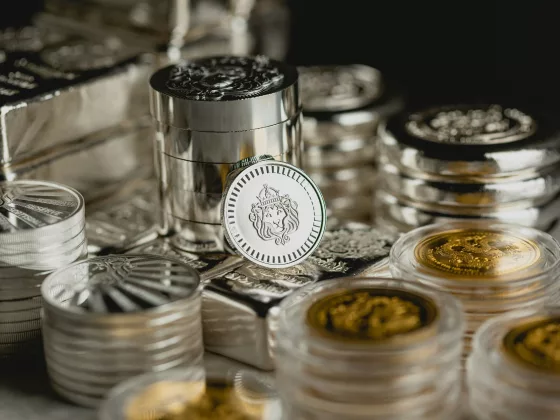What Drives the Price of Gold? A Beginner’s Guide
Have you ever wondered what drives the price of Gold? Gold has fascinated humanity for thousands of years, symbolising wealth, power, and security. But have you ever wondered why the price of gold rises and falls? Whether you’re a curious investor, a student, or simply someone intrigued by the glittering metal, understanding what drives the price of gold is fascinating and practical. Let’s break it down in a way that’s easy to grasp, even if you’re just starting out!
The Basics: Supply and Demand
At its core, the price of gold, like any other commodity, boils down to supply and demand. But gold is unique. Unlike oil or wheat, gold isn’t consumed; almost all the gold ever mined still exists above ground, often in jewellery, coins, or bars. New gold enters the market mainly through mining (about 3,000 metric tons annually) and recycling old jewellery or electronics.
On the demand side, gold has a global fan base. It’s cherished in jewellery, especially in countries like India and China, where gold is woven into cultural traditions and celebrations. Investors buy gold bars, coins, and exchange-traded funds (ETFs) to diversify their portfolios. Even central banks and technology companies play a role in gold demand.
When demand outpaces supply, prices rise. Prices can fall if there’s a glut of gold or a drop in demand. It’s a delicate balancing act, influenced by predictable and surprising factors.
Central Banks: The Power Players
Central banks, like the US Federal Reserve or the Reserve Bank of India, hold massive gold reserves. Their actions can send ripples through the gold market. When central banks buy gold, it signals confidence in gold as a stable, long-term asset. These purchases can reduce the amount of gold available on the open market, pushing prices higher.
Conversely, if central banks decide to sell off gold reserves, it can flood the market and drive prices down. In recent years, many central banks have been net buyers, viewing gold as a hedge against uncertainty and a way to diversify their reserves away from currencies like the US dollar or euro.
Interest Rates and Inflation: The Economic Tug-of-War
Gold doesn’t pay interest or dividends. So, when interest rates are high, other investments like bonds or savings accounts become more attractive, and gold may lose some of its shine. But when interest rates are low or inflation is rising faster than interest rates, gold becomes a popular choice for protecting wealth.
Why? Because gold is seen as a hedge against inflation. When the cost of living goes up and the value of paper money drops, gold often holds its value. This is why you’ll usually see gold prices climb during economic uncertainty or when inflation is making headlines.
The US Dollar: Gold’s Dance Partner
Gold is priced globally in US dollars. This means that when the dollar is strong, gold becomes more expensive for buyers using other currencies, dampening demand and pushing prices down. Conversely, gold becomes cheaper for international buyers when the dollar weakens, often boosting demand and driving prices up.
This inverse relationship between gold and the US dollar is a key dynamic that savvy investors watch closely.
Safe Haven in Stormy Weather: Economic and Political Uncertainty
Gold has earned its reputation as a “safe haven” asset. When the world feels unpredictable, whether due to wars, political upheaval, or financial crises, investors often flock to gold. It’s seen as a store of value that can weather even the roughest economic storms.
Major world events can cause sudden spikes in gold prices as people rush to buy something tangible and historically reliable. In calm times, gold prices may stabilise or even dip as investors focus on riskier assets.
Investor Sentiment: The Human Factor
Markets aren’t just numbers and charts; people and their emotions drive them. Investor sentiment, the collective mood and expectations of investors, can move gold prices up or down, sometimes regardless of the underlying fundamentals.
If investors believe that gold is set to rise, they may buy in anticipation, pushing prices higher. News headlines, economic forecasts, and even social media chatter can all shape sentiment.
Seasonality and Cultural Traditions
Gold demand isn’t constant throughout the year. In countries like India, demand surges during the wedding season and festivals like Diwali, when gold jewellery is a traditional gift. These seasonal and cultural trends can create predictable bumps in gold prices, adding another layer of complexity to the market.
Quick Reference Table: What Moves Gold Prices?
| Factor | How It Affects Gold Price |
| Supply & Demand | Higher demand or lower supply = higher price |
| Central Bank Activity | Large purchases = higher price |
| Interest Rates | Higher rates = lower price |
| Inflation | Higher inflation = higher price |
| US Dollar Strength | Weaker dollar = higher price |
| Economic/Political Uncertainty | More uncertainty = higher price |
| Investor Sentiment | Positive sentiment = higher price |
| Seasonality/Cultural Trends | Festivals/weddings = higher price |
Final Thoughts on What Drives the Price of Gold
Gold’s price isn’t determined by just one thing-it’s a rich tapestry woven from economics, psychology, and world events. By understanding these key drivers, you’ll be better equipped to follow gold’s journey through the markets, whether investing, studying, or simply satisfying your curiosity.
So next time you see headlines about gold hitting a new high or dipping unexpectedly, you’ll know there’s a fascinating story behind every move. Happy learning, and may your financial knowledge shine as brightly as gold!
If you’re ready to take the first steps toward building your precious metals portfolio, check out our comprehensive guide: How to Start Investing in Physical Gold and Silver. This article covers everything from choosing between coins and bars to finding reputable dealers, secure storage options, and practical tips for new investors. It’s the perfect starting point for anyone looking to enter the world of gold and silver investing confidently. Also, be sure to explore the other posts in our investing guides.
Ready to Start Your Gemstone Journey?
Don’t wait to discover the world of gemstones! Explore these essential reads right away.
Fascinated by this article and want to deepen your gemstone expertise? Dive into our comprehensive Gemstone Encyclopedia. Here, you’ll discover detailed information about hundreds of precious and semi-precious stones, including their properties and values.
For those interested in the rich cultural significance and fascinating stories behind these treasures, our History section offers captivating insights into how gemstones have shaped civilisations. Or perhaps you’d like to learn more about birthstones?
And if you’re considering gemstones as more than just beautiful adornments, visit our Precious Metal Investing guide. Here you will learn how these natural wonders can become valuable additions to your investment portfolio.
Related articles
- Gemstone Investments Expert 2025 Outlook
- Gemstones That Increase in Value Over Time
- Metal Investing Strategy in 2025
- How to Start Investing in Gold and Silver
- Gold IRA in 2025
References
- Gold Bank London (23 April 2025). Gold investment for beginners: How gold prices are determined
- Gold Avenue USA (2025). Understanding the Price of Gold
- Hayes, Adam (26 February 2025). Understanding the Dynamics Behind Gold Prices
- Economy Middle East (4 July 2024). How is gold priced: A beginner’s guide
- Altier Rare Coins (9 April 2024). What Drives the Price of Gold: 5 Key Factors
- The Royal Mint (November 2023). What Moves Gold’s Price?
- The Royal Mint (2025). Gold Price
- BullionVault (2025). Gold: a beginner’s guide | Guide & information






![Pigment analysis of Raphael's masterpiece[7][8] reveals the usual pigments of the renaissance period such as malachite mixed with orpiment in the green drapery on top of the painting, natural ultramarine mixed with lead white in the blue robe of Madonna and a mixture of lead-tin-yellow, vermilion and lead white in the yellow sleeve of St Barbara.](https://gemstonesinsider.com/wp-content/uploads/2025/09/Raphael-Madonna_Sistine_sm-560x420.jpg)



